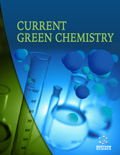
Abstract
Pharmaceutical drug wastes are pharmaceutical molecules that may be released into the environment through various ways, like from pharmaceutical industries, hospitals, or health care channels. Such molecules may be poisonous to the aquatic environment, aquatic lives as well as human beings. In the green approaches toward their treatment, fungi and their extracellular or intracellular enzymes may be significantly useful in the bioremediation of pharmaceutical pollutants. This editorial presents a brief overview of the fungal-assisted bioremediation of pharmaceutical drugs present as wastes and the fate of the fungal applicability towards such bioremediation processes.
Keywords: Fungi, pharmaceutically active compounds, drug wastes, bioremediation, degradation, pharmaceutical drug wastes.
[http://dx.doi.org/10.1371/journal.pone.0259160] [PMID: 34710189]
[http://dx.doi.org/10.1016/B978-0-323-85045-2.00015-7]
[http://dx.doi.org/10.2174/2213346109666220927121948]
[http://dx.doi.org/10.1002/bit.28268] [PMID: 36253930]
[http://dx.doi.org/10.3389/fmicb.2017.01792] [PMID: 28979245]
[http://dx.doi.org/10.3390/w14091374]
[http://dx.doi.org/10.3389/ffunb.2022.896043]
[http://dx.doi.org/10.1016/j.envadv.2021.100071]
[http://dx.doi.org/10.3390/w11081555]
[http://dx.doi.org/10.1016/j.eti.2021.102156]
[http://dx.doi.org/10.1016/j.envadv.2021.100086]
[http://dx.doi.org/10.3389/fmicb.2021.755972] [PMID: 34966363]
[http://dx.doi.org/10.1007/s40201-021-00635-8] [PMID: 34150265]
[http://dx.doi.org/10.21926/aeer.2104027]
 23
23 2
2

















